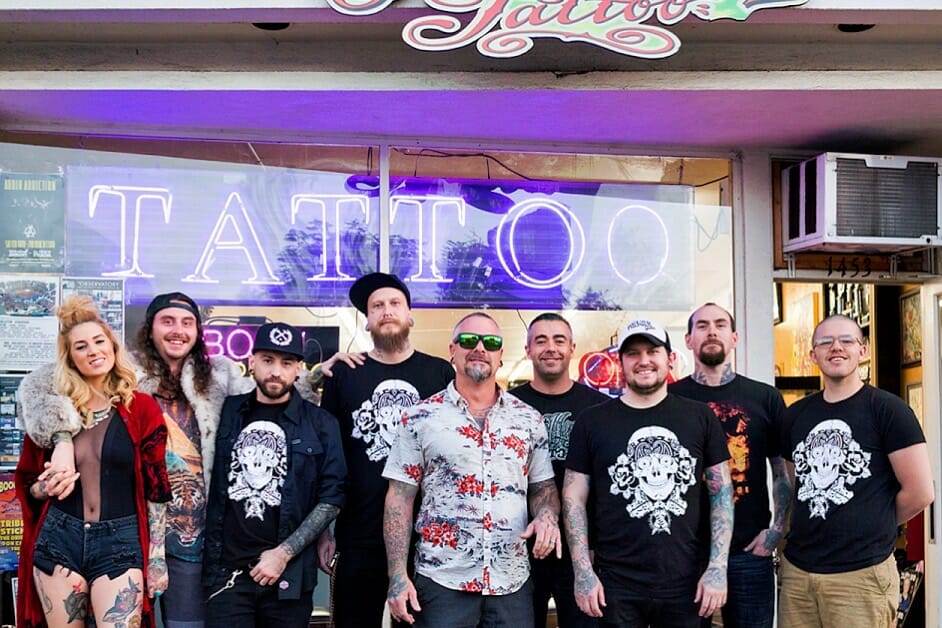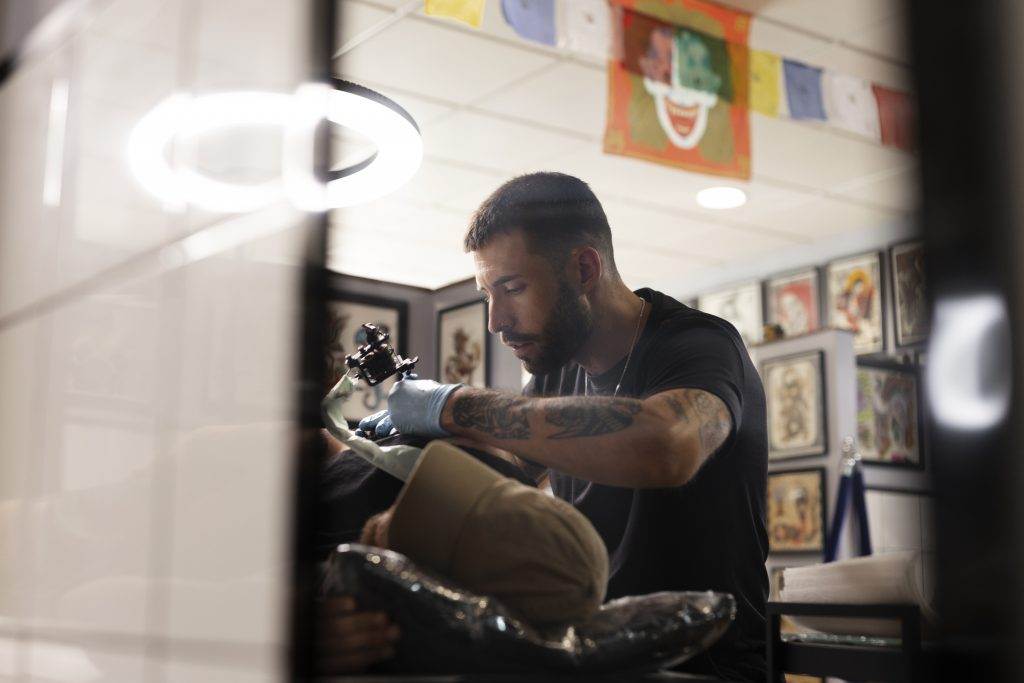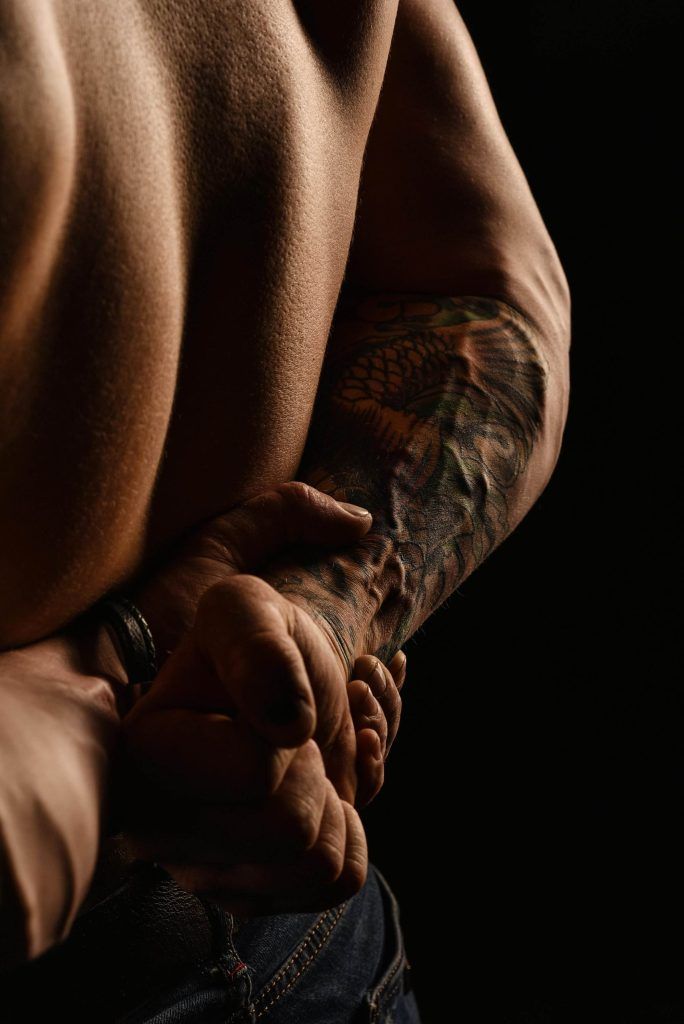Introduction
When considering getting a tattoo, the excitement can be overwhelming. However, selecting the right tattoo artist is crucial to ensuring that the experience is as positive as the results. The artistry and professionalism of the tattoo artist can greatly impact not just the quality of the tattoo but the overall experience.
The Importance of Choosing Wisely
Choosing a tattoo artist is a decision that should not be taken lightly. After all, this is a permanent piece of art that reflects personal significance. Here are key aspects to consider:
- Artistic Skill: The artist’s portfolio can showcase their range and style.
- Hygiene Standards: Understanding the studio’s cleanliness practices is essential for safety.
- Client Satisfaction: Reading testimonials can provide insight into the experiences of past clients.
Setting the Stage for Research
Establishing a solid foundation for research will save time and help in making a well-informed decision. With the right approach, aspiring tattoo enthusiasts can connect with artists who align with their vision and values. Engaging with tattoo communities, both online and in-person, can also lend a hand. These interactions often open up various avenues you might not have considered otherwise. By immersing oneself in research, individuals can effectively navigate the tattoo world, ensuring that they find a fitting artist who can bring their vision to life. This journey ultimately transforms an idea into a meaningful piece of art that will be cherished for a lifetime.

Researching Tattoo Artists
Once individuals have recognized the importance of their selection in the tattooing process, the next crucial step is researching potential tattoo artists. This leap from excitement to deliberate action will ensure the final piece reflects personal style and significance.
Checking Online Portfolios
In today’s digital age, the first stop in research usually involves checking online portfolios. Most tattoo artists showcase their work through social media platforms or personal websites, allowing prospective clients to get a real sense of their style. Here’s what to look for:
- Diversity in Styles: A well-rounded portfolio should feature various styles, from traditional to contemporary.
- Attention to Detail: Notice the precision in line work, shading, and color blending.
- Custom Designs: This can indicate an artist’s ability to collaborate and adapt to individual ideas.
Online portfolios act as a gallery for each artist, providing a glimpse into their creative vision, and can help establish the best fit for your tattoo.
Reading Reviews and Ratings
After browsing portfolios, the next step is to dive into the reviews and ratings. This insight can shine a light on the artist’s reputation and client interactions. When reading reviews, pay attention to:
- Overall Satisfaction: What do past clients say about their final tattoos?
- Artist Professionalism: Look for comments about the artist’s demeanor and comfort during the session.
- Studio Environment: Many reviews will mention cleanliness and safety, which are paramount.
Reviews can be found on platforms such as Google, Yelp, and social media pages. Positive testimonials not only build confidence in the chosen artist but also enhance the overall experience, leading to a satisfying outcome. By thoroughly researching online portfolios and reviews, prospective clients can make an informed choice, setting the stage for a successful tattoo journey.
Visiting Tattoo Studios
Completing the initial round of research brings the exciting moment of visiting potential tattoo studios. This step is vital as it allows individuals to gather firsthand information and assess the atmosphere in which they will be getting their tattoo.

Asking About Artist Specialties
Once at the studio, engaging in dialogue with staff can provide valuable insights into their expertise. Each artist tends to have a specialty, and knowing this will help align personal vision with skill set. Here are key questions to consider:
- What styles do the artists excel in? Whether it’s realism, illustrative, or geometric, understanding the artist’s niche is crucial.
- Can they show examples of recent work in that style? This not only demonstrates proficiency but also current capabilities.
- Are they open to custom designs? Many artists enjoy the collaborative aspect of tattooing, so discussing specific ideas may lead to a more personalized experience.
Asking these questions helps establish a connection and can clarify whether the artist matches your expectations.
Observing Cleanliness and Hygiene Practices
Additionally, taking notes on the studio’s cleanliness is paramount for safety and peace of mind. An ideal tattoo studio should exhibit:
- Organized Workspaces: Clutter-free stations indicate professionalism.
- Sanitation Procedures: Observing staff following hygiene protocols, such as using gloves and properly sterilizing equipment, is vital.
- Licenses and Certifications Display: Many studios proudly showcase their hygiene certifications and artist licenses, underscoring their commitment to safe practices.
Beyond the aesthetic of the studio, these observations confirm that health standards are taken seriously, ensuring a safe and pleasant tattooing experience. By inquiring about artist specialties and scrutinizing cleanliness, prospective clients can take confident steps towards securing their ideal tattoo artist.
Connecting with Past Clients
After visiting a few tattoo studios and gathering initial information, the next step in the tattoo selection process involves connecting with past clients. Their experiences can provide critical insights that inform the final decision.
Inquiring About Experience and Satisfaction
Engaging with individuals who have previously worked with a particular artist can reveal a wealth of information. Here are some essential questions to ask:
- How did you feel during the session? Comfort and communication are key components of a successful tattoo experience.
- What’s the healing process like? Individuals can share firsthand insights about any complications they experienced, making this crucial for understanding post-tattoo care.
- Are you satisfied with the final result? Seeing their tattoos in person can help gauge the artist’s skill level, and high satisfaction rates certainly build confidence in the artist’s abilities.
Gathering these experiences allows prospective clients to set realistic expectations and feel more secure as they approach their tattoo journey.
Seeking Recommendations
Another effective way to connect with past clients is to seek recommendations. Friends, family, or social media groups can be great resources. Here’s how to effectively harness these networks:
- Ask for referrals: Start with those who have visible tattoos you admire, as their artists may align with your preferences.
- Participate in local tattoo events: These gatherings often foster connections among tattoo enthusiasts, making it easier to gather collective opinions.
- Join online forums or community pages: Many discussions occur within dedicated tattoo groups where clients share experiences and recommendations.
By inquiring about experiences and actively seeking recommendations, prospective clients can cultivate a well-rounded understanding of their chosen artist. This knowledge serves to enhance their confidence, ultimately paving the way for a fulfilling tattoo experience.
Understanding Pricing and Policies
With a solid understanding of artist connections and client experiences, the next essential step in the tattoo selection process involves grasping the pricing structures and policies that each studio adheres to. Clarity in these areas will not only prevent misunderstandings but also facilitate smooth transactions on the day of the appointment.
Requesting Quotes and Estimates
The first part of this process is requesting quotes and estimates for the desired tattoo. This inquiry can help prospective clients understand what to expect. Here are key points to keep in mind when seeking an estimate:
- Tattoo Size and Complexity: Discussing the design intricacies can lead to more accurate pricing. Larger or more detailed tattoos typically require more time and therefore may cost more.
- Artist’s Experience Level: Artists with extensive experience or unique specialties often charge higher rates, reflecting their skill and demand.
- Hourly Rate vs. Flat Fee: Understanding the studio’s pricing model is essential. Some artists charge by the hour, while others may provide a flat fee for smaller, less complex designs.
Always feel free to ask for a detailed breakdown of the costs involved, as this transparency fosters trust.
Reviewing Appointment Availability
Once clients have a grasp of pricing, reviewing appointment availability becomes crucial. Factors to consider include:
- Booking Timeframe: Popular studios may have waitlists, so it’s wise to inquire about the expected wait time.
- Deposit Requirements: Many studios require a non-refundable deposit to secure appointments, which can vary by artist.
- Flexibility in Scheduling: Understanding the studio’s hours and whether they offer evening or weekend appointments is vital for those with busy schedules.
By taking the initiative to understand pricing and the associated policies, individuals can plan their tattoo journey with confidence, ensuring a smooth experience from start to finish. This groundwork paves the way for an enjoyable and stress-free tattooing appointment.
Evaluating Artist’s Experience and Style
Having navigated through customer connections and pricing policies, the next vital step is evaluating the artist’s experience and style. Selecting the right artist hinges on their ability to deliver a tattoo that aligns with personal vision and artistic flair.
Reviewing Portfolio Diversity
An artist’s portfolio serves as a visual resume, showcasing their range and versatility. When assessing portfolios, consider these factors:
- Style Variations: Look for diversity in design styles—whether it’s realism, illustrative, traditional, or abstract. A skilled artist should be able to execute multiple styles fluently.
- Recent Work: Seek out the most recent pieces to gauge current technique and skill level. Tattooing styles and trends evolve, and an up-to-date portfolio reflects an artist’s adaptability.
- Custom Designs: Pay attention to the presence of custom tattoos within the portfolio. This indicates the artist’s willingness to collaborate and create bespoke designs tailored specifically for clients.
A varied and impressive portfolio can reveal not only the artist’s skill but also their creative vision, providing a clearer picture of what they can offer.
Assessing Tattooing Techniques
In addition to portfolio diversity, assessing the tattooing techniques used is crucial. Here are several key indicators:
- Line Work Precision: Smooth, clean lines are essential for durability and aesthetics. This can often be seen in the portfolio images.
- Shading and Color Use: Evaluate how well the artist handles shading and color blending, which brings dimension and life to tattoos.
- Healing Process: Inquire about how various techniques hold up over time. Artists who focus on proper techniques often consider how tattoos will age, which reflects their expertise.
By thoroughly reviewing an artist’s portfolio diversity and assessing their tattooing techniques, prospective clients can ensure they select an artist whose style and skill level align perfectly with their vision. This thoughtful approach lays the groundwork for a successful tattoo experience.
Discussing Design and Collaboration
Once prospective clients have thoroughly evaluated an artist’s experience and style, the exciting next step involves discussing the design. This collaboration is key to ensuring the final artwork is exactly what they envisioned.


Sharing Your Ideas and References
Open communication with the tattoo artist about design ideas is essential. During this conversation, several elements should be covered:
- Personal Meaning: Share what the tattoo represents and any significant elements to incorporate. This context enriches the design and can influence the aesthetics.
- Visual References: Gather images or sketches that reflect the desired style, even from different sources. This helps artists understand the look and feel you’re aiming for, providing a more tangible starting point.
- Inspiration Boards: Consider creating a mood board on platforms like Pinterest. Organizing images of colors, shapes, and styles will help express your vision cohesively.
Being proactive in sharing ideas fosters a collaborative environment, allowing artists to apply their expertise while still aligning with the client’s creative vision.
Clarifying Expectations and Communication
After sharing thoughts, it is vital to clarify expectations and establish open lines of communication. Important points include:
- Design Drafts: Discuss how and when initial sketches will be provided. Clear timelines ensure that clients have input during the design phase.
- Feedback Process: Determine how clients can offer feedback on the drafts. Being able to voice opinions and suggest adjustments is essential to achieving the perfect design.
- Final Approval: Set clear expectations for the final design confirmation. Understanding this process ensures there are no surprises on the tattoo day.
By effectively discussing design ideas, sharing references, and clarifying expectations, clients and artists can foster a collaborative relationship that results in a unique and meaningful tattoo. This partnership equips both parties with the tools needed to create artwork that exceeds expectations.
Finalizing Your Decision
Having engaged deeply in the design process and cultivated a strong collaboration with the artist, the final steps involve making your tattoo decision official. This phase ensures that everything is set in motion for a successful tattoo experience.
Making Deposits and Scheduling Appointments
The first order of business is to address the financial aspects of getting your tattoo. Most studios require a deposit to secure an appointment, and understanding this process is essential:
- Deposit Amount: Typically, deposits can range from a flat fee to a percentage of the total price. It’s a good practice to confirm the specifics upfront.
- Payment Methods: Check what methods of payment are accepted. Some studios may only take cash, while others accept credit or digital payments.
- Scheduling: Work with the artist or studio staff to find an ideal appointment time. Popular artists may have longer wait times, so consider your schedule and availability before committing.
Making a deposit not only secures your spot but also indicates a mutual commitment to the process.
Confirming Design Details and Placement
Once the financial aspects are settled, it’s time to finalize the design and its placement on your body. Here’s what to keep in mind:
- Final Design Review: Go over the final design draft with the artist. Ensure that every detail aligns with your vision and that any last-minute modifications are communicated clearly.
- Placement Confirmation: Confirm where you want the tattoo to be located. The artist may offer suggestions based on how the design flows and how it will age over time.
- Aftercare Instructions: Discuss aftercare requirements once the tattoo is completed. Understanding how to care for the new ink will ensure optimal healing and longevity.
By thoughtfully making deposits, scheduling appointments, and confirming design details, potential clients can transition confidently into the next stage of their tattoo journey. This finalization seals the collaborative effort and sets the stage for a memorable tattoo experience.
